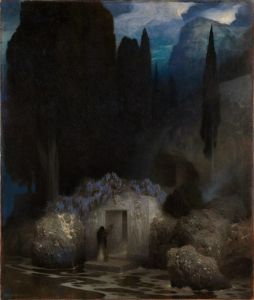
A Monument in Raveningham Church, Norfolk
A hand-painted replica of John Sell Cotman’s masterpiece A Monument in Raveningham Church, Norfolk, meticulously crafted by professional artists to capture the true essence of the original. Each piece is created with museum-quality canvas and rare mineral pigments, carefully painted by experienced artists with delicate brushstrokes and rich, layered colors to perfectly recreate the texture of the original artwork. Unlike machine-printed reproductions, this hand-painted version brings the painting to life, infused with the artist’s emotions and skill in every stroke. Whether for personal collection or home decoration, it instantly elevates the artistic atmosphere of any space.
John Sell Cotman was a prominent English artist and a leading figure in the Norwich School of painters, known for his landscape and architectural subjects. One of his notable works is "A Monument in Raveningham Church, Norfolk," which exemplifies his skill in capturing the essence of architectural forms with precision and artistic sensitivity.
Cotman was born in 1782 in Norwich, England, and developed an early interest in art. He became associated with the Norwich School, a group of artists who were active in the early 19th century and were known for their depictions of the Norfolk landscape and architecture. Cotman's work is characterized by its clarity, attention to detail, and a subtle use of color, which can be seen in his architectural studies.
"A Monument in Raveningham Church, Norfolk" is a watercolor painting that reflects Cotman's fascination with medieval architecture and his ability to convey the grandeur and intricacy of historical structures. Raveningham Church, located in the county of Norfolk, England, is known for its historical significance and architectural features, which Cotman captures with great fidelity.
The painting showcases Cotman's adeptness at rendering the textures and forms of stonework, as well as his understanding of light and shadow. His use of watercolor allows for a delicate portrayal of the monument's details, highlighting the craftsmanship of the period. Cotman's technique involves a careful balance of line and wash, creating a harmonious composition that draws the viewer's attention to the monument's intricate carvings and structural elements.
Cotman's work often involved extensive travel and study of historical sites, and his paintings served as both artistic expressions and historical records. His interest in architecture was not merely aesthetic; it was also educational, as he sought to document and preserve the visual history of England's architectural heritage. This approach is evident in "A Monument in Raveningham Church, Norfolk," where Cotman's attention to detail provides insight into the design and construction of the monument.
Throughout his career, Cotman produced numerous studies of churches, castles, and other historical buildings, contributing significantly to the appreciation and understanding of architectural history in England. His works were widely exhibited and admired, and he played a crucial role in the development of watercolor as a respected medium for serious artistic exploration.
In summary, "A Monument in Raveningham Church, Norfolk" by John Sell Cotman is a testament to the artist's mastery of watercolor and his dedication to capturing the beauty and intricacy of architectural forms. The painting not only reflects Cotman's technical skill but also his deep appreciation for England's historical and cultural heritage. Through his work, Cotman has left a lasting legacy that continues to inspire and inform both artists and historians alike.





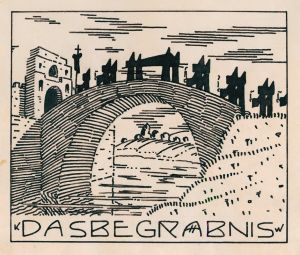
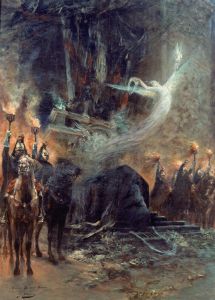
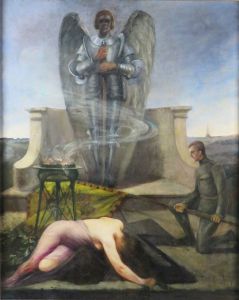

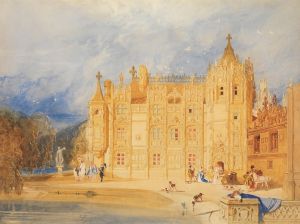
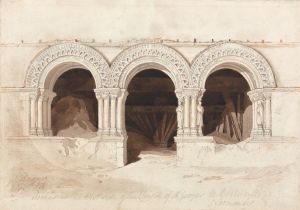
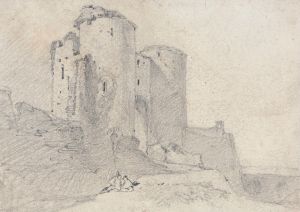
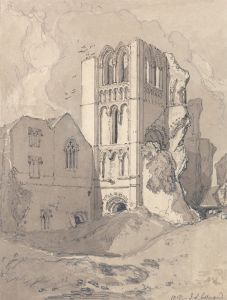
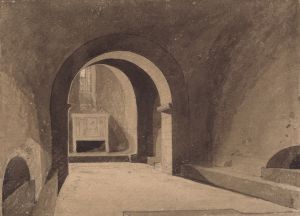
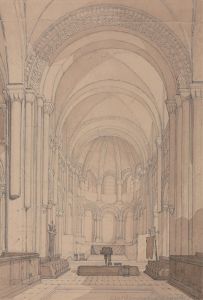
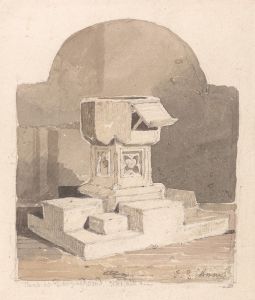
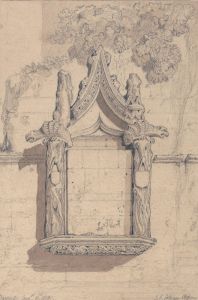
![West Front of the Church of Oyestraham [Ouistreham], near Caen, Normandy](/imgs/249142/s/john-sell-cotman-west-front-of-the-church-of-oyestraham-ouistreham-near-caen-normandy-817bec48.jpg)
